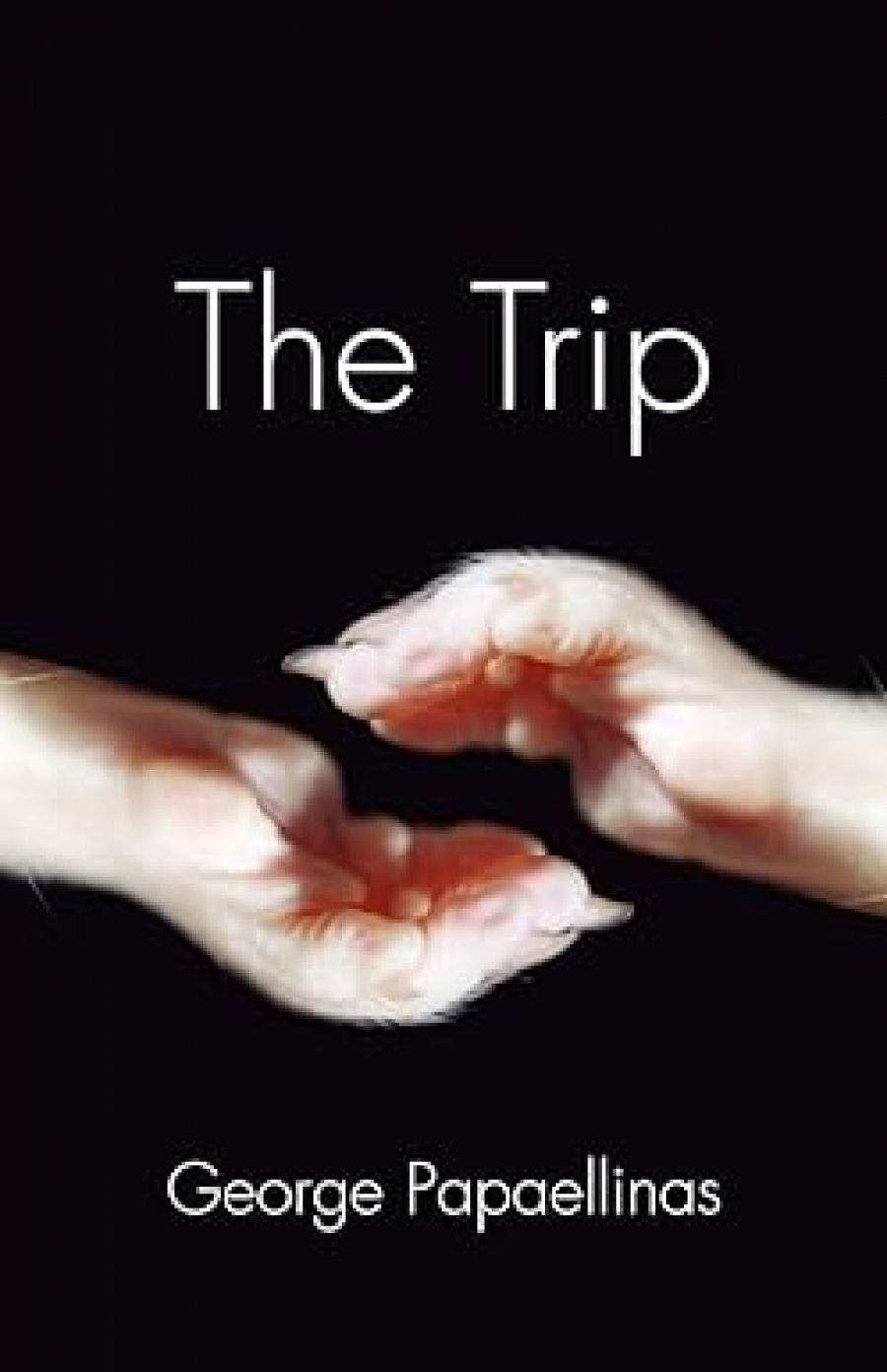
- Free Article: No
- Review Article: Yes
- Article Title: Arfstrayans all
- Online Only: No
- Custom Highlight Text:
The Trip is what happens when Ancient Greek mythology is mixed with Australian history. In a breezy 175 pages, George Papaellinas provides a rewriting of Homer’s Odyssey. He also revisits various highlights (and lowlights) from our country’s past. The result is an amusing and highly idiosyncratic read.
- Book 1 Title: The Trip
- Book 1 Biblio: Re.press, $25 pb, 175 pp
The Trip is structured as a series of prose fragments. These fragments are set in different historical periods, and bear subheadings such as ‘That’s All Over Now’ and ‘Time’. This narrative structure evokes the title of the novel in two respects. Firstly, and perhaps most basically, Papaellinas captures the feeling of a trip through Australian history. Secondly, the structure creates an almost dreamlike feeling. Papaellinas’s novel is not for those readers who prefer their narratives linear or straightforward. As Oddy points out, ‘This story’s not like most stories. It begins with the end …’ Throughout the text, there are some astute observations on Australian traditions and attitudes. Many of these are concerned with race and cultural identity. For example, Oddy observes that ‘Arfstraya can’t be that surprised anymore by visitors even if they’re just tourists who are only migrants in they’re both not reffos’. He also points out that ‘You can be a migrant forever in Arfstraya if you’re not an Anglo’. Some readers may consider passages such as this one to be simply attacks on the Howard government’s approach to refugees, but they are much broader in their scope. In these moments, Papaellinas exposes and criticises the subtle hierarchy that has characterised white supremacy in Australian society. So-called ‘Anglos’ have long occupied the top position in this hierarchy, followed by ‘tourists’ and ‘migrants’, while ‘refugees’ have occupied an unenviable place at the bottom.
Humour is a very personal trait. I found much of the humour in The Trip quite effective. The portrayal of Oddy as a beer-swilling and semi-immortal larrikin had me chuckling constantly. Other moments miss their comic mark. I refer specifically to subheadings such as ‘Ned the Kelly’ and lines such as: ‘Oddy tripped over the torn body of a dead Arfstrayan boy as he slithered quickly into the Arssie hole.’ The humour in these moments seems forced and juvenile, and detracts from the sophisticated wit that runs through the rest of the text.
Also, I was struck by the way Papaellinas has handled the issue of gender. There are several female characters in his novel, though they appear only briefly and seem considerably less active than their male counterparts. An example is Oddy’s mother. Early in the text, Oddy points out: ‘Blaming Mama for everything that ever went wrong in life has always been fashionable.’ This is true, but it is hardly an original critique of sexism in Australia or elsewhere. Moreover, ‘Mama’ is not permitted to speak for herself, because she is ‘dead’. By focusing primarily on male characters, Papaellinas may have wanted to poke fun at a particularly masculine version of our country’s history, but I wonder to what extent his narrative actually endorses such a history.
Overall, The Trip is a significant contribution to the field of Australian historical fiction. The narrative structure and use of humour will appeal to those readers who are seeking a quirky narrative. However, Papaellinas’s text will also please readers who are looking for a fresh and creative perspective on ‘the lucky country’.


Comments powered by CComment